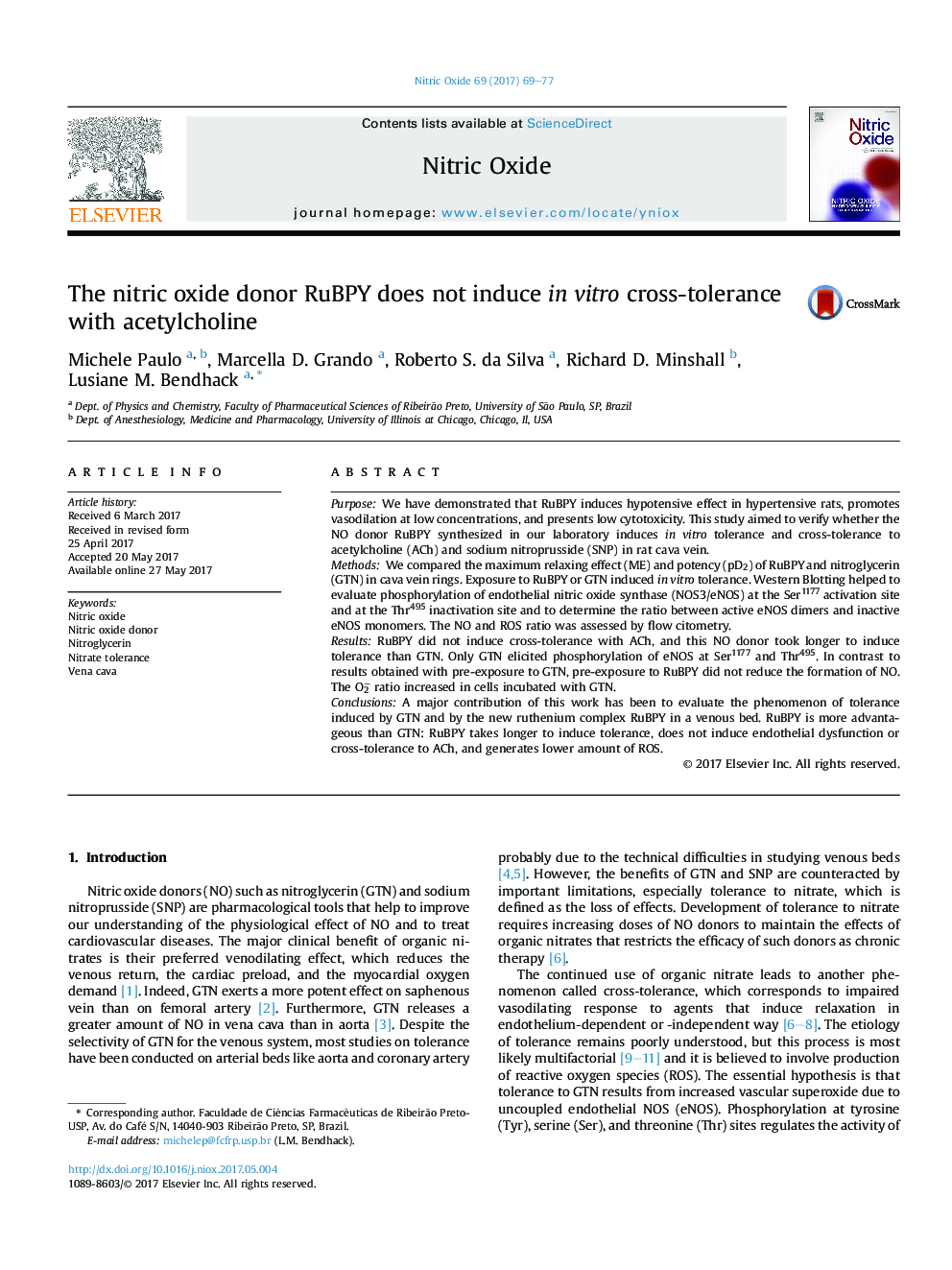| Article ID | Journal | Published Year | Pages | File Type |
|---|---|---|---|---|
| 5514199 | Nitric Oxide | 2017 | 9 Pages |
â¢RuBPY took longer to induce tolerance than GTN.â¢RuBPY did not induce cross-tolerance with ACh.â¢RuBPY did not modulate eNOS activity.
PurposeWe have demonstrated that RuBPY induces hypotensive effect in hypertensive rats, promotes vasodilation at low concentrations, and presents low cytotoxicity. This study aimed to verify whether the NO donor RuBPY synthesized in our laboratory induces in vitro tolerance and cross-tolerance to acetylcholine (ACh) and sodium nitroprusside (SNP) in rat cava vein.MethodsWe compared the maximum relaxing effect (ME) and potency (pD2) of RuBPY and nitroglycerin (GTN) in cava vein rings. Exposure to RuBPY or GTN induced in vitro tolerance. Western Blotting helped to evaluate phosphorylation of endothelial nitric oxide synthase (NOS3/eNOS) at the Ser1177 activation site and at the Thr495 inactivation site and to determine the ratio between active eNOS dimers and inactive eNOS monomers. The NO and ROS ratio was assessed by flow citometry.ResultsRuBPY did not induce cross-tolerance with ACh, and this NO donor took longer to induce tolerance than GTN. Only GTN elicited phosphorylation of eNOS at Ser1177 and Thr495. In contrast to results obtained with pre-exposure to GTN, pre-exposure to RuBPY did not reduce the formation of NO. The O2â ratio increased in cells incubated with GTN.ConclusionsA major contribution of this work has been to evaluate the phenomenon of tolerance induced by GTN and by the new ruthenium complex RuBPY in a venous bed. RuBPY is more advantageous than GTN: RuBPY takes longer to induce tolerance, does not induce endothelial dysfunction or cross-tolerance to ACh, and generates lower amount of ROS.
Graphical abstractDownload high-res image (157KB)Download full-size image
